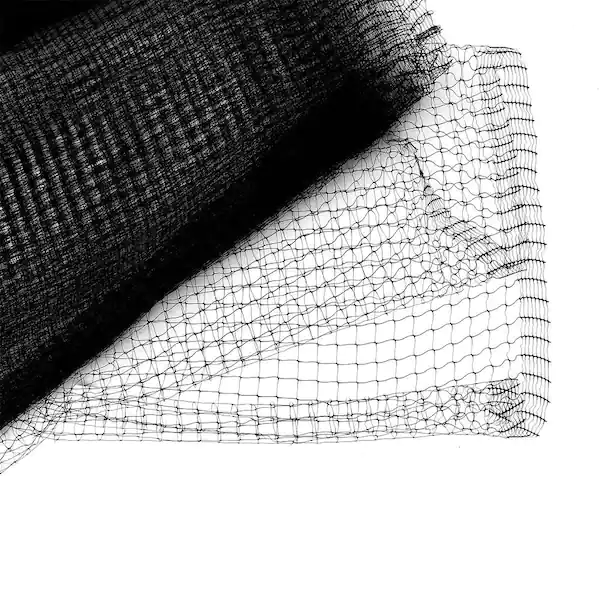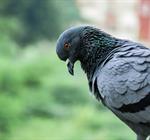
22 Jun 2023 | Apex Environmental Services (UK) Ltd
Bird Netting: Heavy-Duty VS No-Knot
Urban habitats and avian life often intersect in intricate ways, with man-made structures unwittingly serving as roosting and nesting spaces for a variety of bird species. For property owners, birds setting up home in buildings can present an array of issues, from property damage and noise disturbance to potential health hazards. A practical and humane solution comes in the form of bird netting, which seeks to strike a balance between respecting avian life and protecting buildings.
But what’s the difference between heavy duty and no-knot bird netting? Let’s take a look.
What is bird netting?
Bird netting is a protective measure employed to deter birds from establishing nests or roosting in areas where they may cause problems or present health hazards. Made from robust materials such as polyethylene or nylon, bird netting serves as a deterrent rather than a trap, ensuring the birds' safety while also ensuring the efficiency of the deterrent. Generally, bird netting is designed to be durable and resistant to weather conditions, providing a long-lasting solution for bird deterrence without violating the UK’s conservation laws.
Benefits of bird netting
Health protection
Birds, especially those adapting to urban environments, can carry various diseases which can prove harmful to humans. These range from Histoplasmosis, which can affect the lungs, to Psittacosis, which can lead to severe pneumonia. Bird netting significantly reduces the risk of these diseases by preventing birds from roosting on buildings, thus curtailing direct or indirect contact with their droppings.
Damage prevention
Bird droppings are corrosive and, over time, can cause substantial damage to buildings, leading to hefty repair costs. Larger species may also cause physical damage through pecking and nest building. Bird netting effectively safeguards the structural integrity of buildings, preventing droppings from accumulating and deterring birds from causing physical damage.
Noise reduction
The cacophony created by a large flock of birds can be disruptive, especially in residential and commercial areas. Bird netting provides a solution by preventing birds from roosting in such areas, thus reducing noise pollution and ensuring a more serene environment for residents and workers.
Aesthetic maintenance
Bird droppings and nests can detract from the aesthetic appeal of a building - after all, who wants to grab lunch from a cafe covered in guano? Bird netting aids in maintaining the architectural aesthetics by preventing bird habitation on the premises, and as a result, buildings remain clean and visually pleasing to passers-by and customers.
Bird Netting: Heavy-Duty Vs No-Knot
When choosing bird netting, it can be helpful to understand the different types available, to ensure the chosen product aligns with the specific requirements of your building and the environment in which it’s situated. Heavy-Duty and No-Knot netting are two common types of bird netting on the market, each offering unique advantages:
Heavy duty bird netting
Heavy-Duty bird netting, as the name suggests, is known for its robustness. This type of netting is designed to endure harsh weather conditions and effectively deter larger bird species. Its durability and strength make it an excellent choice for buildings in extreme weather locations or those dealing with larger birds like pigeons or seagulls.
No-knot bird netting
In contrast, No-Knot bird netting is designed with a smoother, non-abrasive surface that minimises the risk of injury to birds. This netting is lighter yet robust, capable of deterring smaller birds without causing harm. Its strength, coupled with a gentler impact on birds, makes it an ideal choice for locations inhabited by smaller bird species, and those situated in less extreme weather conditions.
Ultimately, both of these forms of bird netting do their job; both no-knot and heavy duty formays are used by anti-bird netting services in UK, and both hold up well when it comes to durability, efficiency and ease of installation.
The bottom line
Ultimately, bird netting - both no-knot and heavy duty - can help manage the complex and often ongoing struggle between property owners and nestling birds. While heavy-duty netting provides resilience against harsh weather and larger, potentially more destructive bird species, no-knot netting - with its less abrasive design - reduces harm to birds while effectively deterring them from landing and nesting on buildings.
This means that the choice between heavy-duty and no-knot netting boils down to the specific needs of the building, the bird species in question, and the local climate conditions. A sound decision can result in a win-win situation, where our feathered friends coexist harmoniously alongside urban dwellers, without putting customers, residents, passers-by, - or the structural integrity of your building - at risk.


